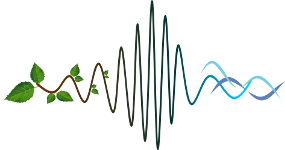Spatial structure plays an important role in ecology and management. Underwater, habitat structure is usually defined using physical rather than biological features and temporal information is generally spares, based on punctual surveys. Although it is know that different habitats produce distinct underwater sound signatures, very few studies have exploited these sonic habitat properties to evaluate spatial variability in zoobenthic activity. In this study, continuous 20-days recordings from three sites within a similar habitat (rocky bottom, with patches of kelp) were compared in terms of zoobenthic sound production. Between-site analyses of identifiable, impulsive sounds of zoobenthic origin (snaps) as well as the underlying background noise were computed. Significant differences were observed in terms of snap rate, overall snap received levels and background noise levels. One of the sites had snap received levels equivalent to the background noise levels of the other sites, indicating a local very faint zoobenthic activity, likely reflecting low animal abundance. Marked differences were also identified in the spectral and temporal composition of the soundscapes of the three sites. Generally, significantly more snaps were produced at dusk and night compared with daytime. Differences in water depth, light, tidal current strength and small-scale habitat structures likely explain the observed differences in zoobenthic sound production. Our findings indicate that passive acoustic monitoring of soundscapes provides important, often lacking biological information to habitat structure in terms of animal activity also within an apparently similar habitat. Acoustic cues that convey continuous information about a key compartment of coastal ecosystems have the potential to be of great value to describe seascape structure and variability.
|
|
|
|
Monday
16
Applications I
› 16:45 - 17:00 (15min) › Rouelle Conference Hall
Spatial soundscape variability within a marine landscape: what benthic sounds tell us
1 : Fondation Grenoble INP
Institut polytechnique de Grenoble (Grenoble INP)
46 avenue Felix Viallet 38031 Grenoble -
France
2 : Fondation Grenoble INP
* : Corresponding author
Institut Polytechnique de Grenoble - Grenoble Institute of Technology
46 avenue Felix Viallet 38031 Grenoble -
France
|
| Online user: 2 | RSS Feed |

|

 PDF version
PDF version